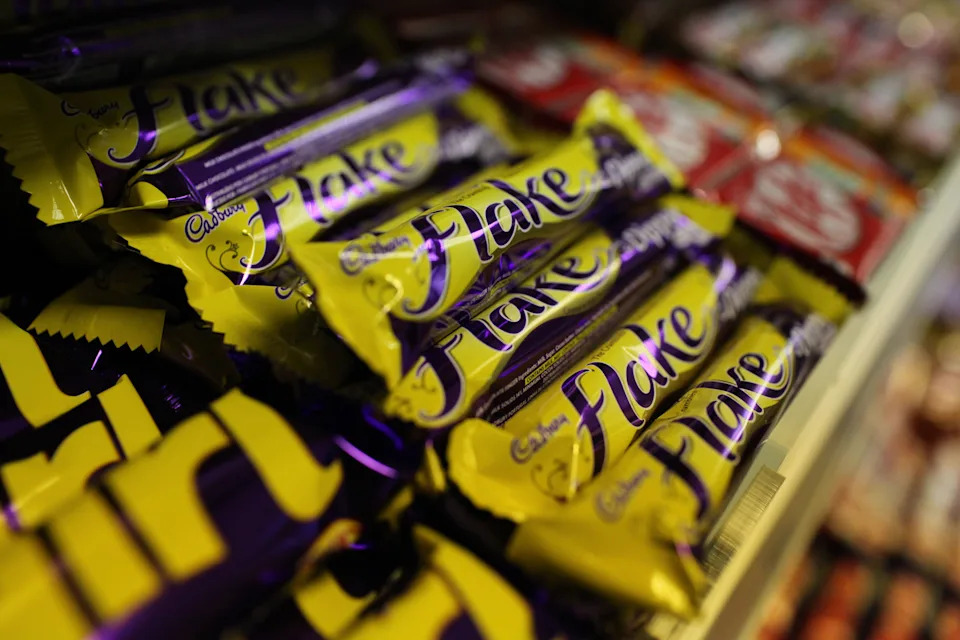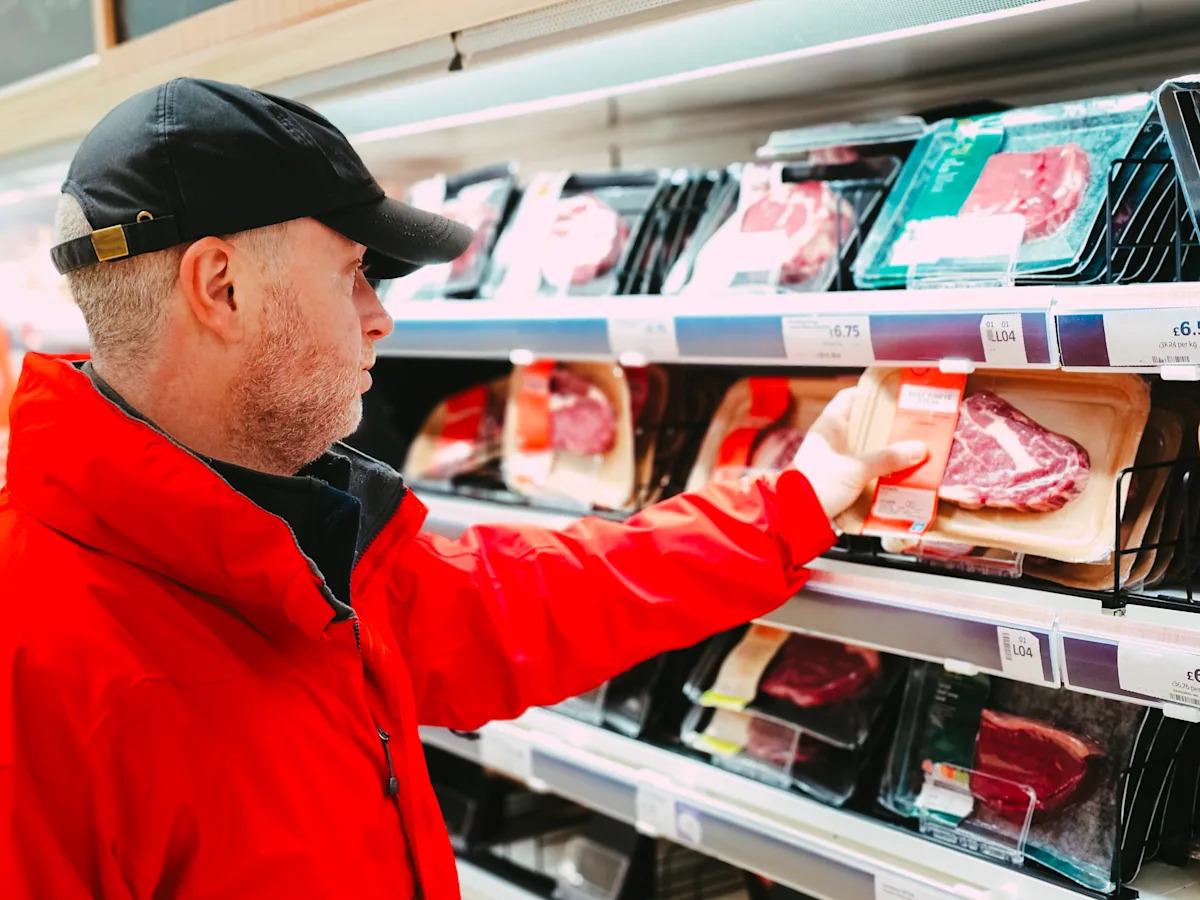Food prices have skyrocketed in the last month, with the price of beef and veal going up by nearly a quarter, the latest inflation figures show.
Juice, coffee and chocolate are among the basics that have dramatically risen in price, according to figures released on Wednesday, with experts warning that rising food costs “are particularly concerning”.
Overall inflation has risen by 3.8% in July, edging up from 3.6% in June, according to the consumer prices index (CPI), the Office for National Statistics (ONS) said.
Inflation rose by more than expected as demand for summer travel pushed up air fares and food prices continued to climb, according to official figures.
Here’s what we know about the food price rises, why it is concerning, and what it means for the wider cost of living in the UK at the moment.
What food prices are increasing the most?
According to the index, these are the foodstuffs that went up in price the most.

Chocolate prices have taken a hit, increasing to 17%. (PA)
-
Overall food and non-alcoholic beverages inflation: 4.9% (up from 4.5% in June)
Why are food prices going up?
Climate change is said to be a big factor in the increase, with widespread droughts in the UK this summer leading to smaller crop yields.
“As the UK experiences one of our worst droughts in living memory, the impact of climate change on these figures is clear to see,” Tom Lancaster, land, food and farming analyst at the Energy and Climate Intelligence Unit, said.
“The Bank of England stated in a report this month that extreme weather is now one of the main drivers of food price inflation, and that climate change-related impacts may prevent it from coming down as expected towards the end of this year.
“We can already see the impacts of this year’s drought starting to come through in some vegetable prices, and inflation for coffee, chocolate and tea are all back up, all crops that have been hit by extreme weather linked to climate change in recent months and years.”

Extremely low water levels can be seen at the Yorkshire Water reservoir Ogden Moor. (Windmill/Alamy)
Added to this, the Ukraine war has significantly disrupted global supply chains, particularly affecting energy and commodity prices, which in turn pushed up food prices globally and in the UK.
To a lesser extent, the Israel-Gaza war has also taken a toll, affecting global markets and shipping routes, causing further cost pressures on food imports.
Why is it a problem?
When food prices rise, the average customer faces some significant knock-on effects with how far they can stretch their budget.
“Households are once again seeing the cost of their weekly shop climb, with food inflation now up by 1.9% in just four months,” Kris Hamer, director of insight for trade body the British Retail Consortium, said.
“This surge has been a key driver behind headline inflation, alongside a rise in transport costs, piling fresh pressure on families already being forced to cut back.”
At the sharper end, more struggling families have to turn to food banks for support to deal with rising food costs.
“The rising cost of food is particularly concerning for families as it comes on in the wake of a period of steep increases in the cost of essentials and rising food bank use,” James Smith, research director at the Resolution Foundation, said.
Increasing food prices will drive more people to food banks. (PA Images via Getty)
It looks like inflation is only set to continue, indicating that food prices might be higher for longer.
The Bank of England is expecting CPI inflation to continue rising to a peak of 4% in September, before price rises start to ease.
It’s not great for the central bank, which is tasked with keeping inflation at 2%.
“UK inflation looks increasingly like an international outlier as CPI stepped up again in July to reach 3.8 per cent, a nineteen-month high, with a worrying increase in the inflation rate of essentials,” Smith added.
However, Harmer added that there was some “limited relief” for consumers with clothing and footwear inflation easing and some everyday food items like olive oil, butter and cheese falling month-on-month.
What other prices have risen?
With inflation rising across the board, food is not the only good affected.
Air fares soared by 30.2% between June and July, the biggest jump since the collection of monthly data began in 2001.
The average price of petrol rose by 2p per litre between June and July, and the average diesel price by 2.9p per litre over the period, the data showed.
Prices across UK restaurants and hotels also increased last month, largely driven by a jump in overnight hotel stays booked the night before.
Added to this, because inflation is still fairly high at 3.8%, the Bank of England is less likely to lower interest rates anytime soon.
Homeowners celebrated a small victory when the average two-year mortgage deal dropped below 5% on 13 August, the first time since Liz Truss’s mini-budget sent them skyrocketing in 2022.

The average two-year mortgage deal dropped below 5% on 13 August.
However, they are sadly likely to stagnate again until inflation drops.
When it comes to the average person’s spending power, even with current inflation levels, they are still said to be in a better position than they were last year.
According to the CPI, annual wage growth in real terms was 1.5% for regular pay and 1.1% for total pay.
Even though prices are rising, this suggests wages are rising enough for workers to have slightly more spending power than a year ago when adjusted for inflation.
Responding to the increase, Rachel Reeves acknowledged that there was “more to do to ease the cost of living” following the figures.
The chancellor said: “We have taken the decisions needed to stabilise the public finances, and we’re a long way from the double-digit inflation we saw under the previous government, but there’s more to do to ease the cost of living.
“That’s why we’ve raised the minimum wage, extended the £3 bus fare cap, expanded free school meals to over half a million more children and are rolling out free breakfast clubs for every child in the country.”
